10 UNESCO World Heritage Sites to Visit in France During the Olympics
Visitors to the Olympics will not only be able to enjoy the sports while supporting their favorite countries and athletes. France offers an unusual...
Ledys Chemin 29 July 2024
The forthcoming Paris 2024 Summer Olympics will bridge the worlds of art and sport, with equestrian competitions at the Palace of Versailles, fencing at the Grand Palais, and the various X Games at the Place de la Concorde, as well as the women’s marathon that recreates the route of the March on Versailles in 1789. Read on for an overview of how the Olympic Spirit can energize the French capital’s landmarks and the art they contain.
My first memory of the Olympics was the Barcelona 1992 Opening Ceremony. I was a young girl back then. But the anticipation I had while watching it remains vivid. Like many others, I remember the highlight of that ceremony, when archer Antonio Rebollo placed the torch on his arrow and aimed it at the cauldron.
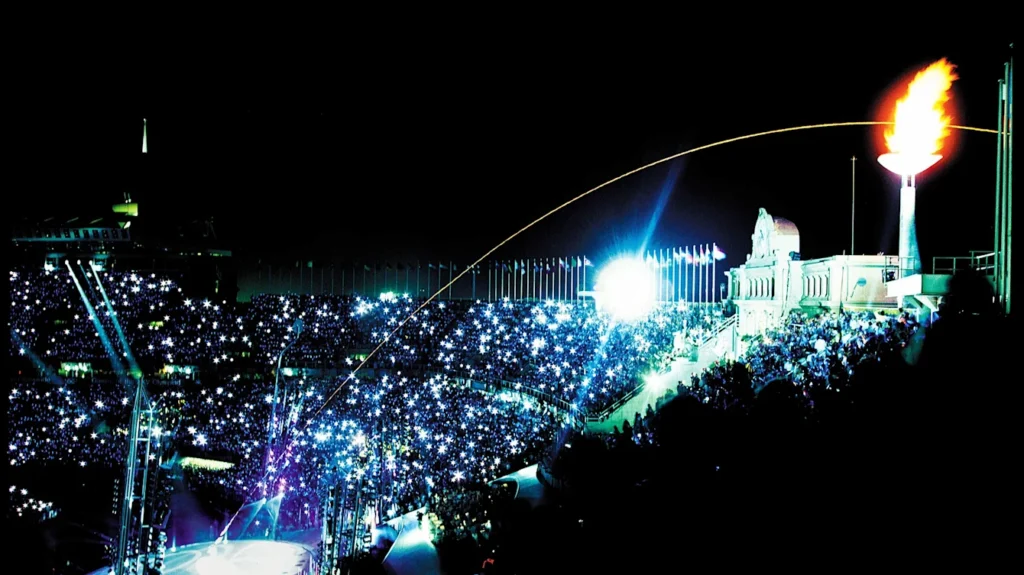
Peter Read Miller, Lighting of the Olympic Torch, Barcelona 1992. Source: Olympics.com.
The arrow, carrying the Olympic flame, soared across the night sky and lit the cauldron a few heartbeats later. I had never seen a sight as wonderful as this! It was a moment of peace, friendship, and hope and an occasion that brought all the countries in the world together while captivating a young girl’s imagination just like mine.
For decades and centuries, the Olympics resonate with me and billions of us as a time to congregate and celebrate humanity. This summer, we can continue this tradition by cheering for our favorite athletes and all the participating countries while appreciating art in Paris, one of the most historic cities in Europe.
As the organizers promise: The Paris 2024 Olympic and Paralympic Games will be the biggest event ever organized in France. The Olympic Games will take place from 26 July to 11 August 2024. The spectacle during those weeks will go down in history and Paris will be the center of the world – the world of sport and much more. The Games are a popular, multicultural festival, a celebration to share with the rest of the world. They represent a new adventure that will embark France on an experience unlike anything it has seen before.
Here, you will find the amazing venues to be featured during the Paris 2024 Olympics. Take a glimpse into the artistic, cultural, and historical sites hosting the events as you cheer on your athletes from the comfort of your own home.
Because Paris is not like any other city, it deserves every honor. The Games in the Spiral City promise a complete spectacle, thought out for the athletes, spectators, and television audiences. Paris’ iconic landmarks are being transformed into sporting arenas to offer spectators an unparalleled experience and provide an outstanding backdrop for sporting prowess.
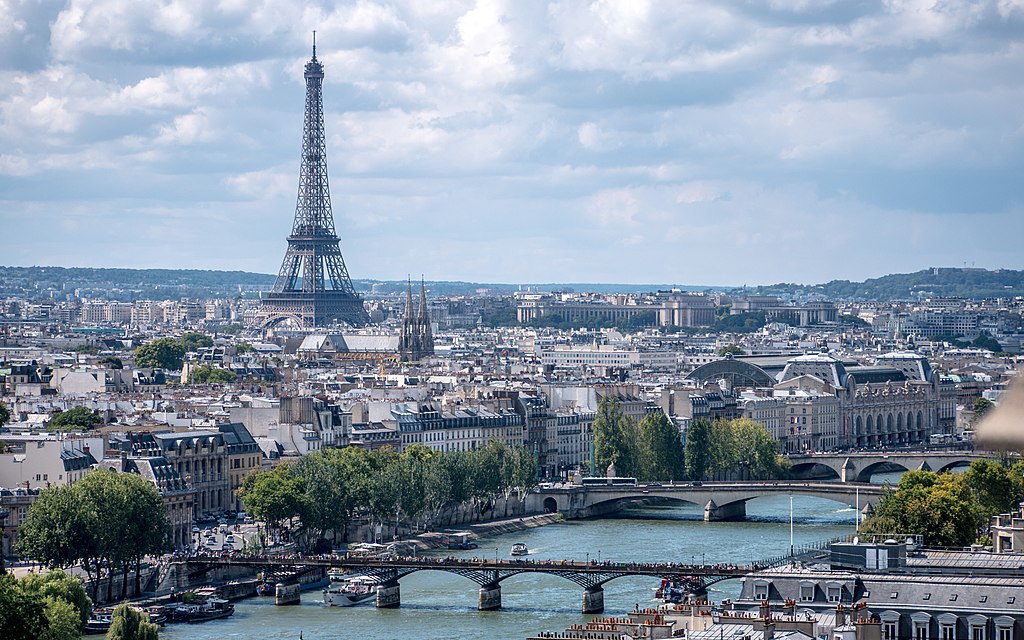
The Eiffel Tower seen from the Saint-Jacques Tower, 2014, Paris, France. Photograph by Yann Caradec via Wikimedia Commons (CC BY-SA 2.0).
While the Opening Ceremony is in the process of restructuring to improve accessibility, organizers are planning to make the most of their venue—That is, the City of Light itself!
For the very first time in the history of the Summer Olympics, the opening ceremony will not be held in a stadium. Instead, Paris will host the opening through its main waterway—the Seine. The Parade of Nations will depart from the Austerlitz Bridge, going past the two islands at the city center, Île Saint Louis and Île de la Cité. Along the way, athletes will sail alongside several of the iconic sights of Paris, now the official Olympic venues—The Place de la Concorde, the Esplanade des Invalides, the Grand Palais—before the grand finale at the Trocadéro.
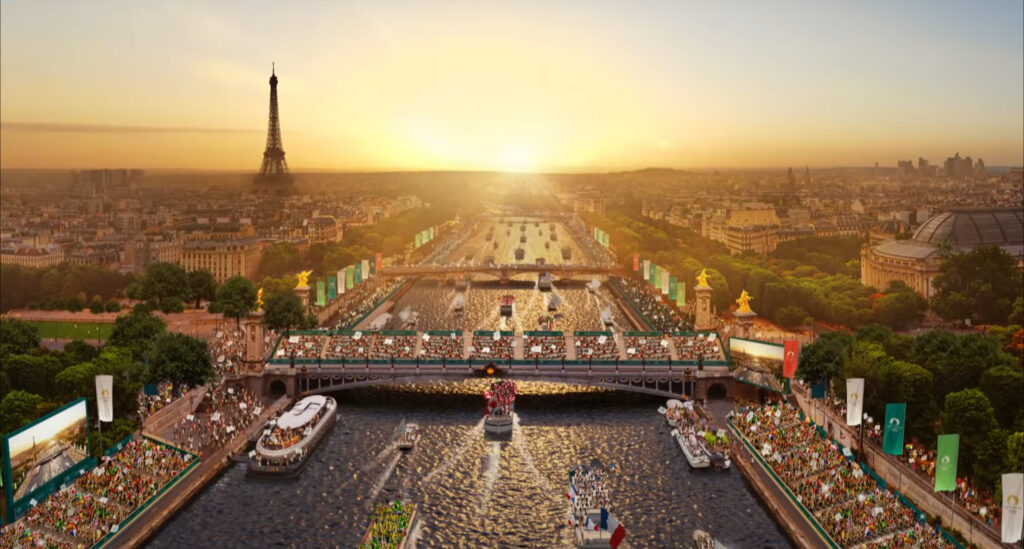
The Olympic Seine, Paris 2024. Screenshot via Paris2024.org.
What is most exciting about this unique approach is that at least 600,000 spectators will be able to attend. That is ten times more than a stadium could fit. Visitors wishing to access the lower quays, from the Austerlitz Bridge to the Iéna Bridge, will need to purchase tickets. But those who do not mind watching from the upper quays can attend for free! It will be a memorable experience that will set the mood for the rest of the Olympics. Not only will this approach live up to the Olympic spirit but also to France’s motto of “Liberté, égalité, fraternité” (Liberty, Equality, Fraternity).
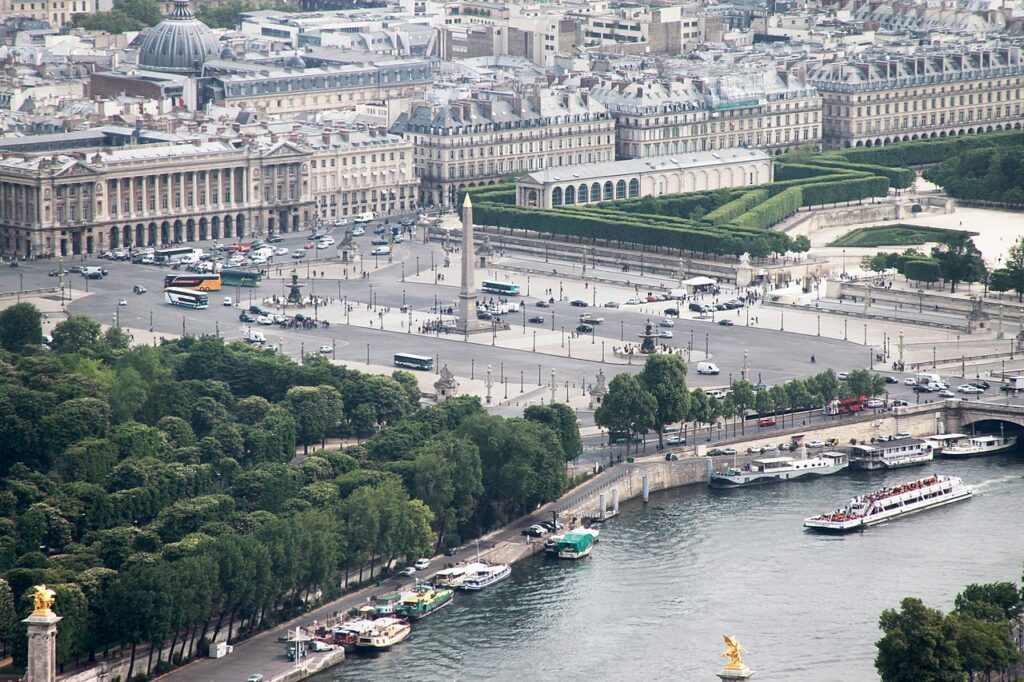
Place de la Concorde as seen from the Eiffel Tower, 2011, Paris, France. Photograph by Cristian Bortes, via Wikimedia Commons (CC BY 2.0).
The Place de la Concorde is the largest square in Paris. It has an octagon shape and connects the Champs-Elysées to the Tuileries Garden, the Church of Sainte-Marie-Madeleine, and the Palais Bourbon across the river. It was at this site where Louis XVI, Marie Antoinette, and 1,300 other people were executed during the French Revolution. Robespierre himself, one of the most influential leaders of the Revolution, met his end in the square, too. During the Reign of Terror, it was renamed the Place de la Revolution. But, in 1795, it gained its current name to indicate harmony and peace.
Parisians have been using the Place for gatherings. It hosted world’s fairs, celebrated the victories of two world wars and even was a part of the spontaneous march after France won the 1998 World Cup. During Paris 2024, it will be the place for urban sports such as breaking, freestyle BMX, skateboarding, and 3×3 basketball.
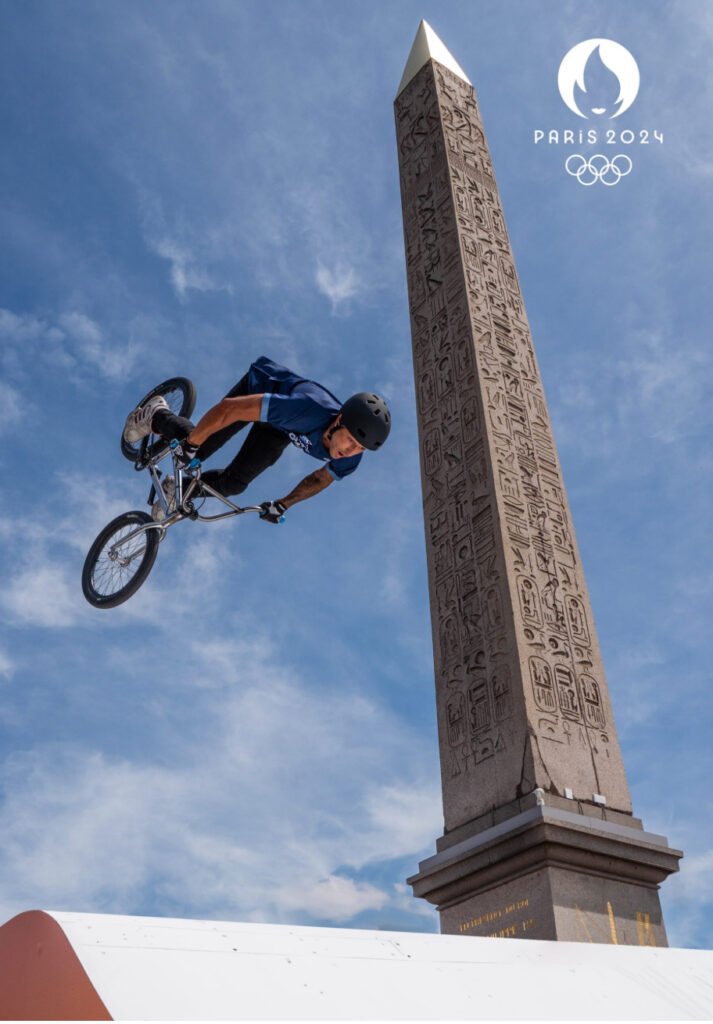
La Concorde, Paris 2024. Screenshot via Paris2024.org.
On the Place de la Concorde, visitors will come face-to-face with the oldest monument in Paris—the 3,300-year-old Luxor Obelisk. The obelisk was a diplomatic gift from the Sultan and Viceroy of Egypt, Muhammad Ali, in 1830. The reason for the gift? It was a gesture of friendship and gratitude for Jean-François Champollion’s assistance in deciphering Egyptian hieroglyphs.
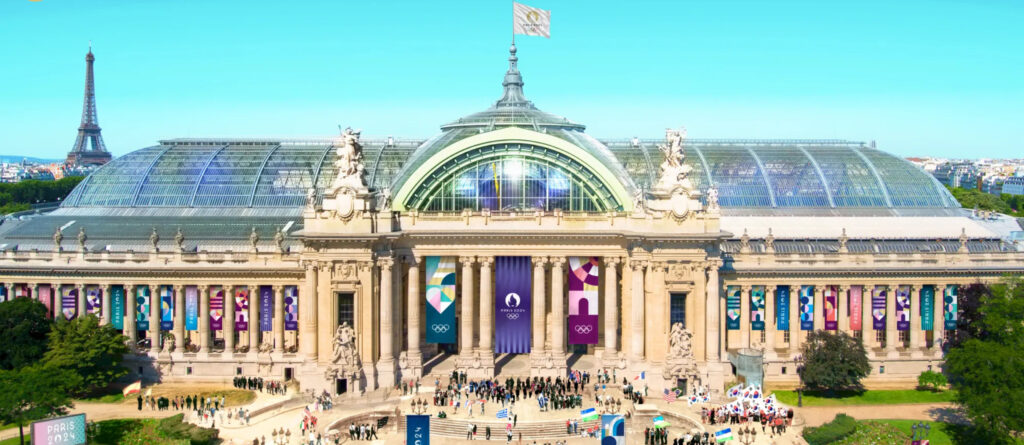
Grand Palais, Paris 2024. Screenshot via Paris2024.org.
Most things in Paris are majestic and fabulous, and the Grand Palais is no exception. As a monumental building conceived for the Universal Exhibition (Exposition Universelle) of 1900, the Grand Palais was part of the plan to link the Champs-Élysées with the Esplanade des Invalides (currently Avenue Winston-Churchill) that involved adding a new bridge over the Seine (now Pont Alexandre III). Commuting made easy!
The project was a success. It is known for its mixed material façades of steel, stone, and glass, as well as the decorative work from about 40 artists, who added statues, mosaic and ceramic friezes, and sculptures.
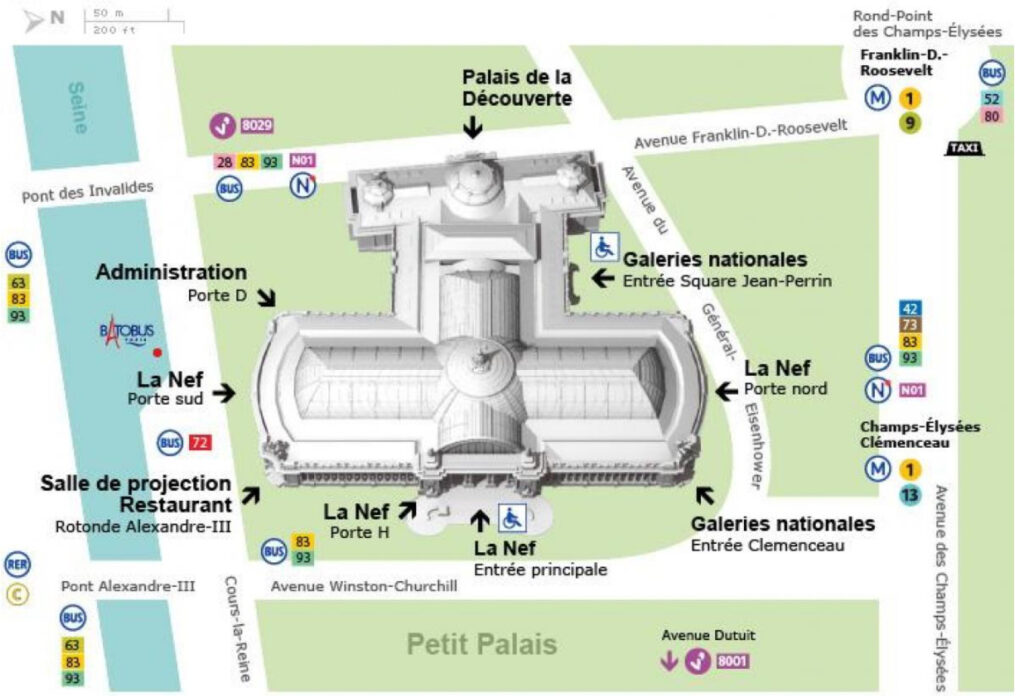
Map of the Grand Palais, Paris, France. Screenshot via Map-of-paris.com.
From the beginning, the Grand Palais has been a work of architecture and a venue for the arts across its three main sections: the Nave, the National Galleries, and the Palais de la Découverte. The Nave welcomes a variety of events like horse riding, concerts, and contemporary art shows. The National Galleries hosts large-scale exhibits on artists in the Western art canon. The Palais de la Découverte is a children-friendly, interactive science museum.
The Palais will accommodate the fencing and taekwondo events.
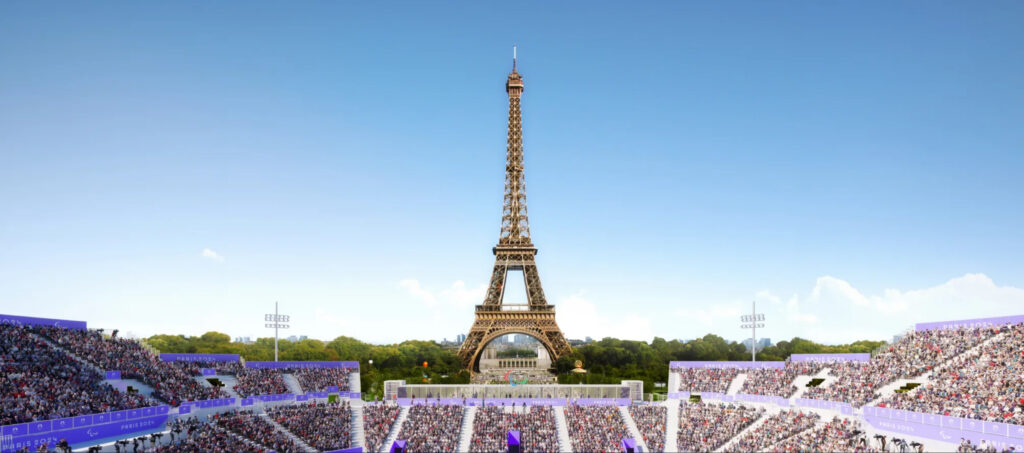
Eiffel Tower Stadium, Paris 2024. Screenshot via Paris2024.org.
The Champ de Mars, situated between the Eiffel Tower and the École Militaire, is one of the best-known public green spaces in the world. With a name deriving from the Campus Martius (Field of Mars), the space gave a nod to this Roman site and their god of war in a “modernist” way: The lawns there were formerly used as drilling and marching grounds by the French military.
The Eiffel Tower needs no introduction—La Dame de Fer (“The Iron Lady”), the masterwork of Gustave Eiffel’s company, the centerpiece of the 1889 World’s Fair (despite significant pushback), and now, a UNESCO World Heritage Site and, arguably, the face of Paris on the international stage.
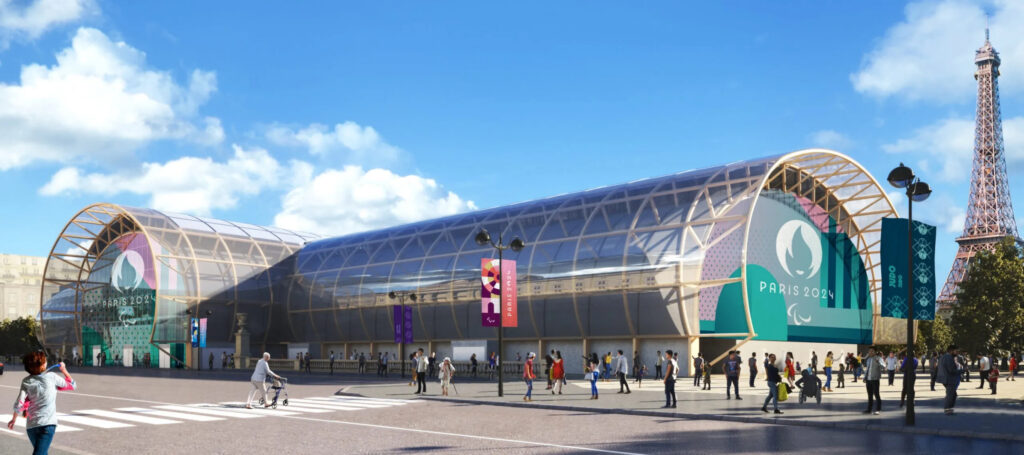
Champs de Mars Arena, Paris 2024. Screenshot via Paris2024.org.
The Eiffel Tower is a world icon, and the view of it from the Champ de Mars is spectacular. During Paris 2024, the Champ de Mars Arena facing the École Militaire will be a temporary venue for judo and wrestling. Beach Volleyball athletes will have the chance to compete in the open air right next to the Eiffel Tower.
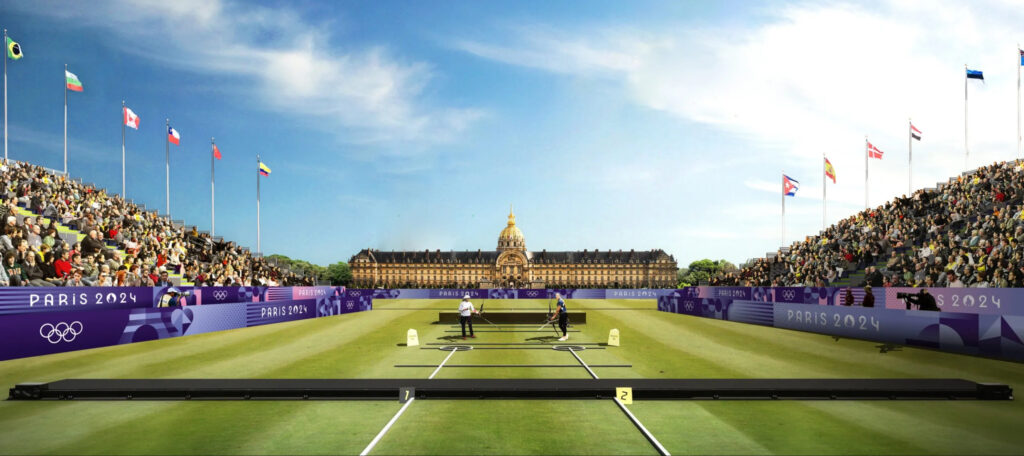
Invalides, Paris 2024. Screenshot via Paris2024.org.
The Esplanade des Invalides is an open area on the north side of the Hôtel des Invalides. This is a building complex dating from the reign of Louis XIV, initially conceived as a military hospital and retirement home for veterans. It includes a chapel, which is now better known for Napoleon Bonaparte’s tomb.
The Esplanade will host archery and para-archery competitions. It will serve as the starting point for individual time trials.
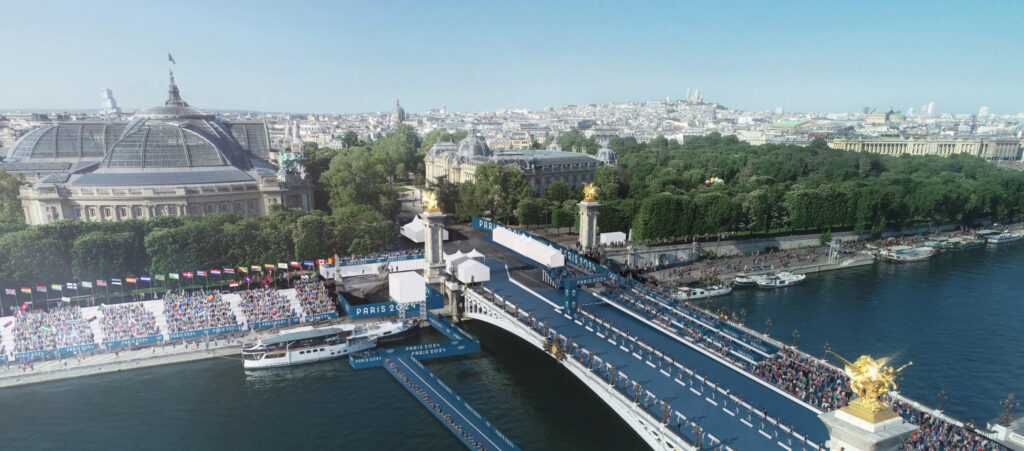
Pont Alexandre III, Paris 2024. Screenshot via Paris2024.org.
The Pont Alexandre III is the most ornate bridge in the city. The bridge took its name from Alexander III of Russia to commemorate the Franco-Russian alliance of 1892. The Tsar’s son, Nicholas, better known as Nicholas II of Romanov fame, laid the foundation stone in October 1896. It was inaugurated in 1900 for the World’s Fair, as was the Grand Palais beside it. The bridge formed a shorter path between the Grand Palais and Les Invalides. It also provides easier access to Musée de l’Orangerie on Quai d’Orsay across from the Place de La Concorde.
The bridge is built in the Beaux-Arts style but mixes art nouveau in its ornamental lamps, cherubs, nymphs, and winged horses. These sculptures represent the arts, sciences, commerce, and industry.
Paris 2024 will bring this area back to the focal point. The Pont Alexandre III will connect two Olympic venues, the Grand Palais and Les Invalides, and continue to provide access to the Place de la Concorde, Champ de Mars, Pont d’Iéna, the Eiffel Tower stadium, and the Olympic flame itself.
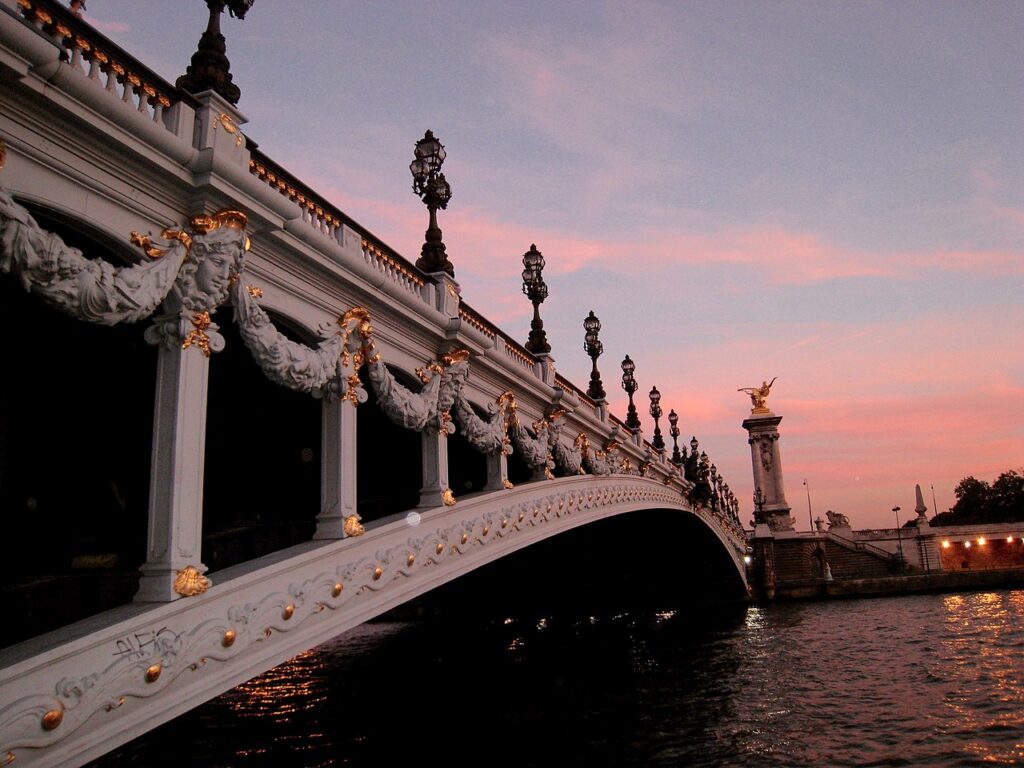
Pont Alexandre III, Paris, France. Photograph by Didier Moïse via Wikimedia Commons (CC BY-SA 4.0).
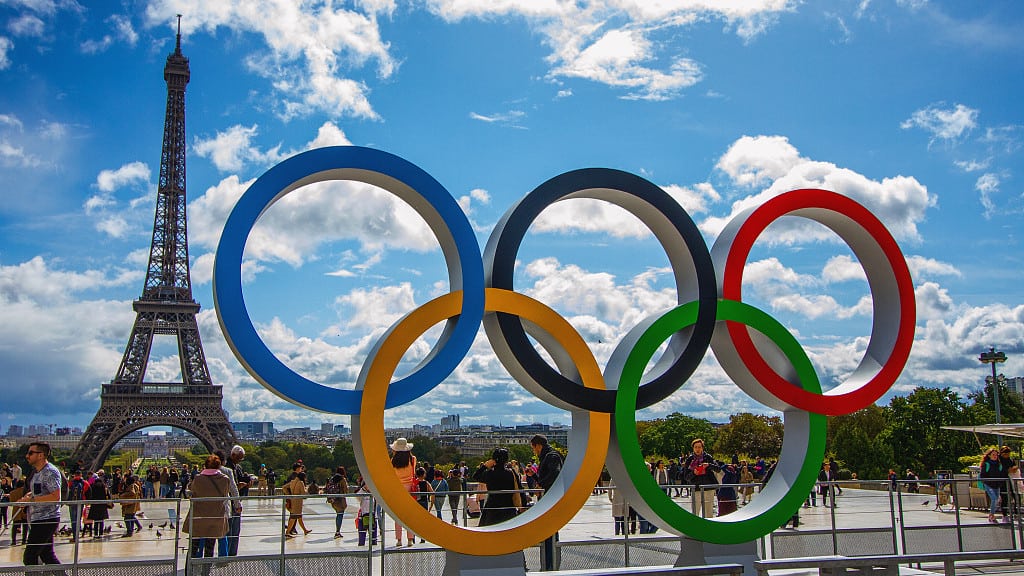
Olympic Symbol at the Trocadéro, Paris 2024. Source: Fattiretours.com.
The Trocadéro is a perfect place to take pictures of the Eiffel Tower. They are perfectly aligned and have the Seine between them! The area is named after the Battle of Trocadero in 1823, a French victory in Southern Spain. The site is known for the Palais de Chaillot and the Jardins du Trocadéro, and throughout the years, there has been a palace, a castle, and even a whole village. Today, it is the home of several museums, a theater, an aquarium, and a garden.
This summer, the triathlon, paratriathlon, road cycling, marathon, 20km race walk, and the 10km marathon swimming will take place there.
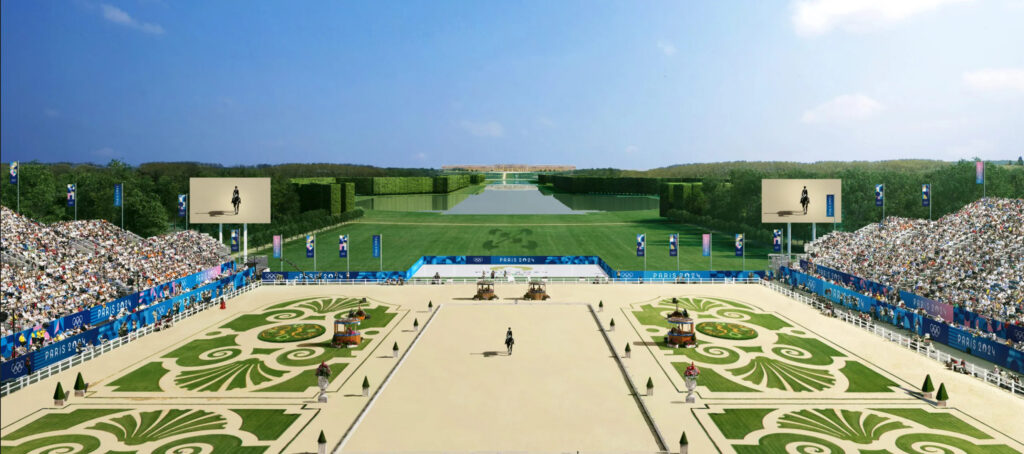
Palace of Versailles, Paris 2024. Screenshot via Paris2024.org.
Although the Palace of Versailles started as the hunting lodge of Louis XIII, Louis XIV expanded it and moved his court there, hoping that he could gain more control over his courtiers. He might also wished to separate himself from the Parisians, who initiated a sling of revolts during his youth. The palace remained an imperial residence until Louis XVI was arrested during the French Revolution.
Versailles stands for opulence. The architecture, the gardens, the paintings, the furnishings… even the golden gates that opens to visitors. Everything in Versailles speaks of wealth. With occupants such as Marie Antoinette, the place sparks fascination even today. But it’s allegedly more famous for the Hall of Mirrors, where the Treaty of Versailles was signed at the end of the First World War.
The venue will be remodeled for equestrian sports, parts of the triathlon and pentathlon, and the Paralympics. During this time, the Palace will also host special exhibitions dedicated to horses and equestrianism in Western culture between the 16th and 20th centuries. Consequently, Apollo’s Chariot Fountain will reappear in Versailles after being removed for restoration in 2022.
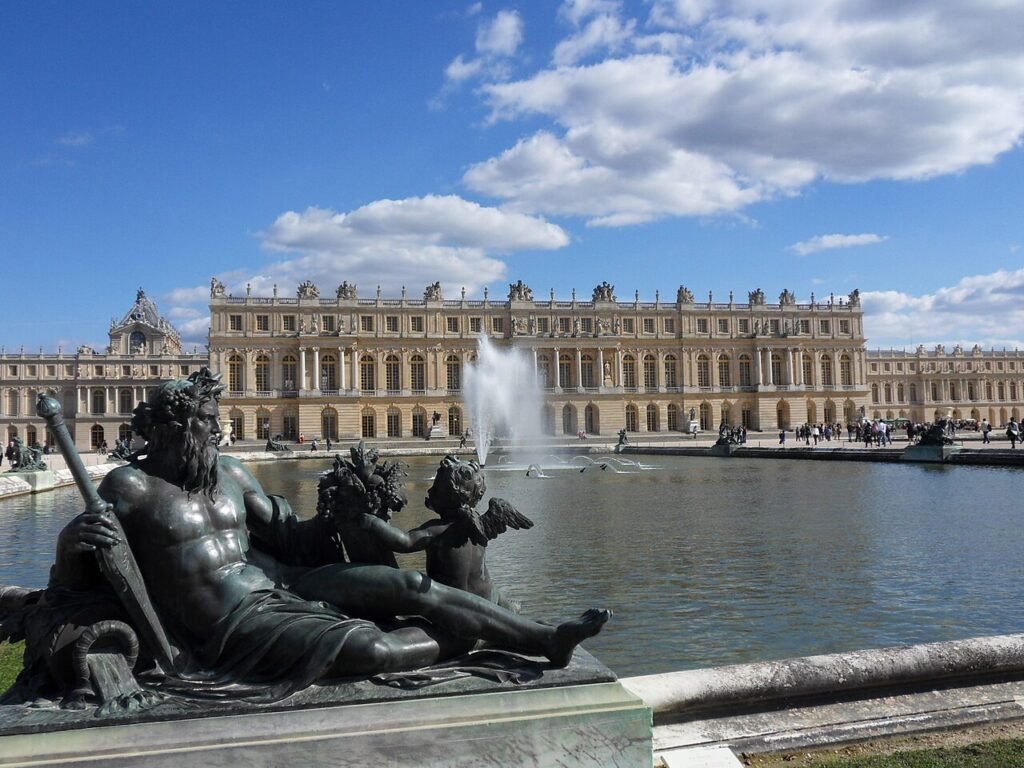
The garden façade of the Palace of Versailles, Paris, France. Photograph by via Wikimedia Commons (CC BY-SA 2.5).
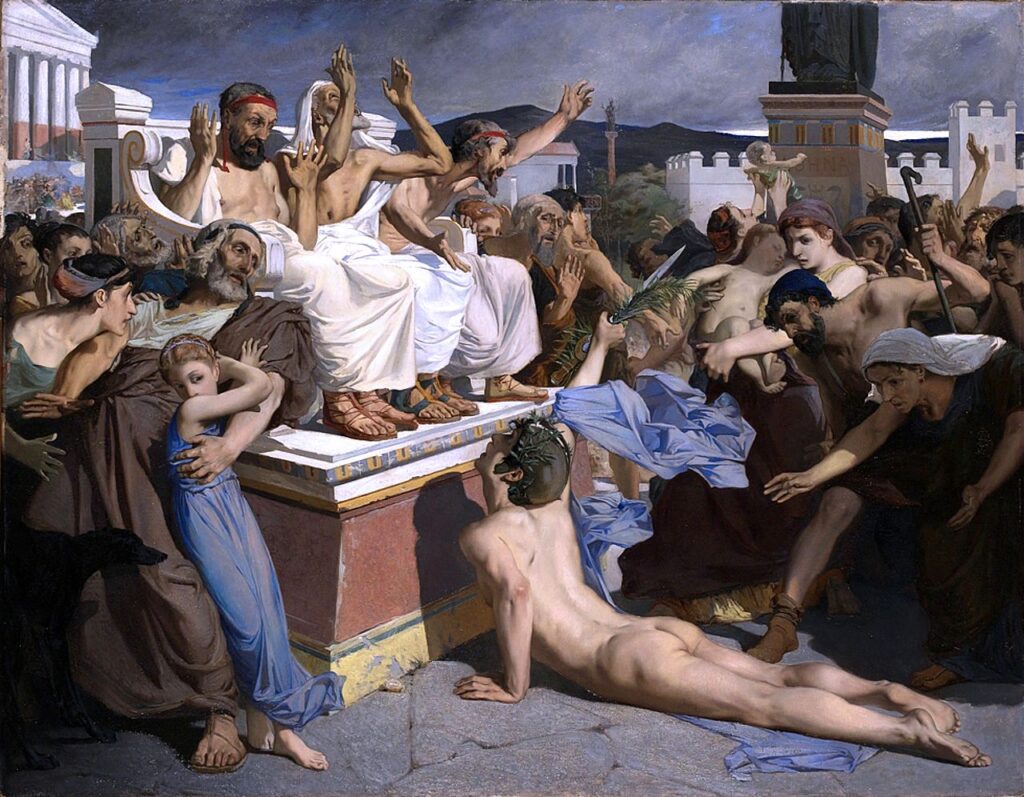
Luc Olivier Merson, The Soldier of Marathon, 1869, Private Collection, Wikimedia Commons (public domain).
The marathon is one of the most exciting and long-standing events since the first modern Olympics in 1896 with ancient Greek origins. In 490 BCE, The Battle of Marathon took place between the Greeks and the Persians in a city of the same name in the northeast corner of Attica. As the legend has it, Pheidippides, an Athenian messenger, ran about 240 km (150 mi) in two days to Sparta to seek help. He then ran the 40 km (25 mi) to a battlefield near Marathon, and eventually back to Athens after the Greek staved off the Persian invaders. “Nikomen (We win)!” He announced, and then fell dead to the ground.
The story of Pheidippides became a Robert Browning poem, which Baron Pierre de Coubertin and other founders used as a moral story to support a running race. Since then, the marathon has been 42,195 km (26 mi 385 yd) long. That is roughly the distance from Marathon to Athens that Pheidippides covered.
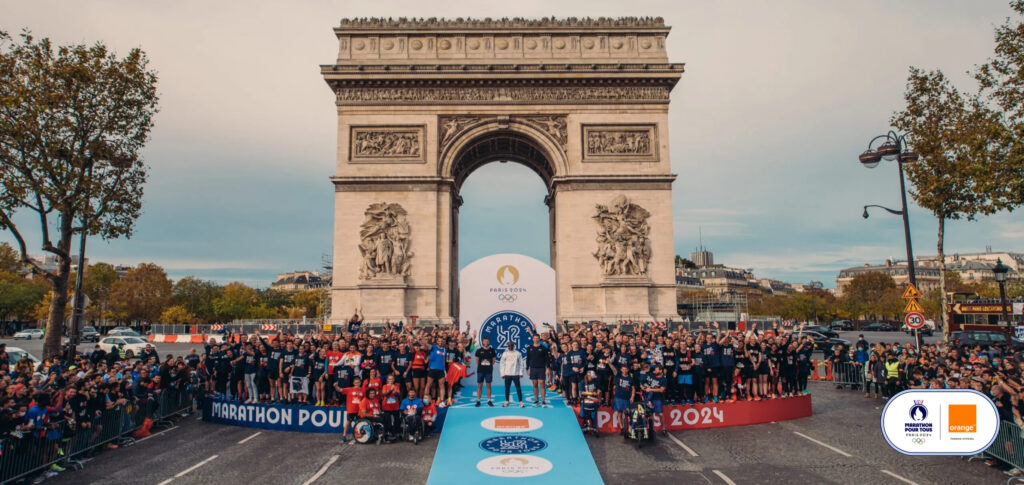
Marathon Pour Tous, Paris 2024. Screenshot via Paris2024.org.
The marathon in Paris 2024 is unprecedented in many ways. On the one hand, the race will have two formats: a full marathon for athletes and a 10k race open to the general public.
On the other hand, the race will also pay tribute to a moment in the history of France. The route will reenact the Women’s March on Versailles on October 5th, 1789, a protest led by Parisian women demanding the King and his family return to Paris and address the bread shortage and economic unrest. It was the last time the King and Queen had left Versailles for Paris, for they would never be able to return. The march resulted in the Declaration of the Rights of Man and Citizens.
France will be the first to make the women’s marathon the final event of the games, one day after the men’s marathon and a few hours before the closing ceremony. The race will begin at the Hôtel de Ville of Paris (the city hall) and finish at Les Invalides.
We hope by reviewing its history, sports, culture, and art, we have piqued your interest in the 2024 Summer Olympics. On April 16, sunlight will ignite the Olympic torch in the Sanctuary of Olympia, following the Greek ceremony held since the first Olympic Games and the ancient traditions behind them. From the Peloponnese, it will travel to Athens, then by boat to five French overseas territories: Guadeloupe, Guyana, Martinique, French Polynesia, and Reunion Island. It will then arrive in Marseille, mainland France, where an epic journey across the country will start.
The torch will pass various historical places like the caves of Lascaux, the medieval city of Carcassonne, the Abbey at Mont Saint-Michel, and the D-Day Landing Beaches in Normandy. When it finally arrives to the Opening Ceremony, the whole world will be ready to applaud.
Let the games begin!
DailyArt Magazine needs your support. Every contribution, however big or small, is very valuable for our future. Thanks to it, we will be able to sustain and grow the Magazine. Thank you for your help!